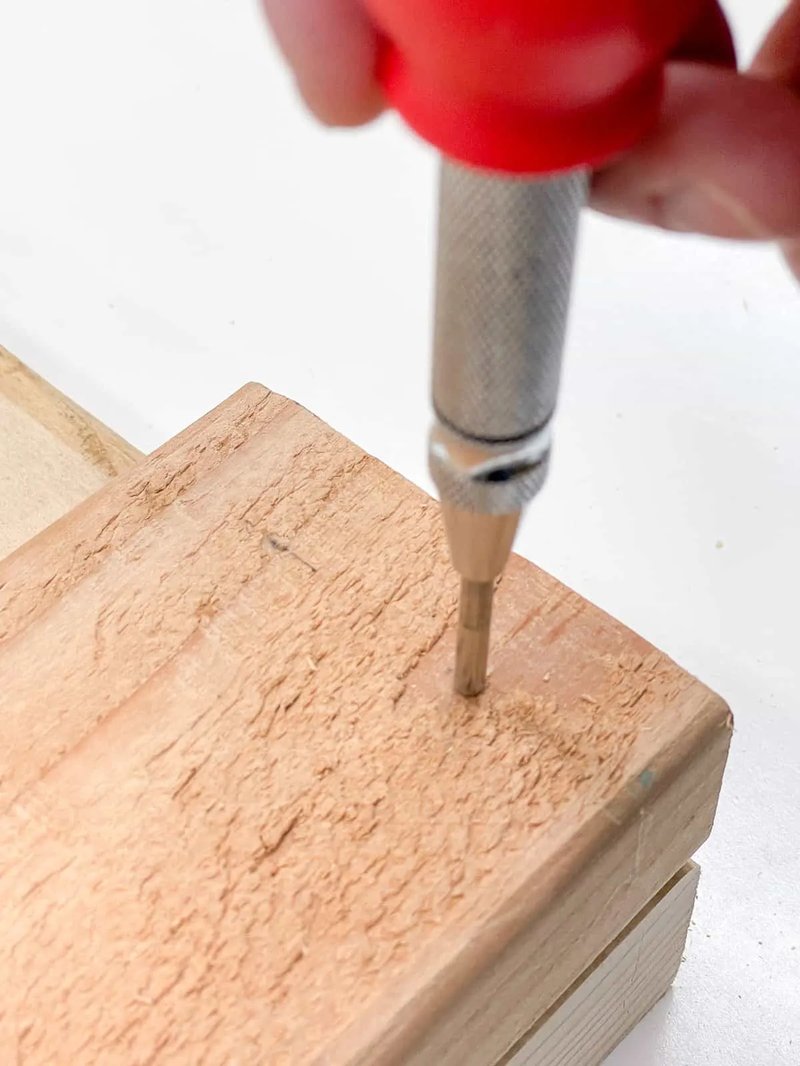
A centering punch is a small tool, often overlooked, but incredibly useful for anyone who drills—whether you’re a DIY enthusiast or a seasoned pro. This tool makes marks on the surface where you plan to drill, ensuring your holes are precise. Brands like Starrett and Irwin offer reliable options that get the job done well. Let’s dive into how to use a centering punch effectively and why it’s such a game-changer.
What Is a Centering Punch?
A centering punch is a simple tool made of hardened steel, designed to create an indentation or “dent” in a material’s surface. This might seem minor, but that small mark acts as a guide for your drill bit. Without it, bits can wander, leading to misaligned holes, which can be frustrating and time-consuming to fix.
The punch has a pointed tip and a cylindrical body. You can use it on various materials, including wood, metal, and plastic. Think of it as your personalized drill signpost, pointing exactly where to go. If you’ve ever tried to start a hole without one, you might know the struggle of the drill bit slipping. That’s where the centering punch shines.
Why Use a Centering Punch?
You might be wondering, “Isn’t it easier to just start drilling?” Sure, it might seem that way at first, but the centering punch does a few important things:
- Prevents Wandering: The punch creates a small dimple that keeps your drill bit from slipping off target.
- Improves Accuracy: Accurate placement results in clean and evenly spaced holes, which is crucial for any project requiring precision.
- Reduces Frustration: Less guesswork means fewer mistakes. You can work with confidence knowing that your holes will be where you want them.
If you’ve ever had to fill in an unwanted hole, you know it can be a tedious job. Using a centering punch helps you avoid that hassle altogether. In short, it’s a simple yet effective tool that can save you time and trouble in the long run.
Choosing the Right Centering Punch
Not all centering punches are created equal. When selecting one, consider a few factors:
- Size: Make sure the punch fits the scale of your project. Smaller punches are ideal for delicate work, while larger ones are better for heavy-duty tasks.
- Material: Look for a punch made from high-carbon steel or other durable materials to ensure longevity and effectiveness.
- Ergonomics: A punch with a comfortable grip will make your work easier, especially during extensive projects.
For example, if you’re working with thin metal, a narrow-pointed punch would suit you best. In contrast, a thicker punch might be necessary for woodwork. Brands like Starrett provide a range of options, ensuring there’s something for everyone’s needs.
How to Use a Centering Punch Step-by-Step
Using a centering punch might seem straightforward, but there’s a bit of technique involved to get the best results. Here’s how to do it:
1. Mark Your Spot: Use a pencil or marker to indicate where you want to drill. This gives you a visual guide.
2. Position the Punch: Place the point of the centering punch on your marked spot. Ensure it’s stable and aligned with what you want to drill.
3. Apply Pressure: Hold the punch securely and tap the end lightly with a hammer or mallet. You only need to create a small dimple, so don’t go too hard—this isn’t a game of whack-a-mole!
4. Check the Indentation: The dimple should be clear and deep enough to guide your drill bit. If it’s not, you can repeat the process.
Once you’ve made the indentation, you can confidently grab your drill and start creating that pilot hole. Using a centering punch can feel like a small step, but it’s a significant one toward improving your drilling accuracy.
Common Mistakes to Avoid
Like any tool, there are pitfalls to avoid when using a centering punch. Here are a few common mistakes:
- Not Marking the Spot Properly: Skipping the initial marking can lead to errors. Always mark before punching.
- Using Too Much Force: A light tap is usually sufficient. Overdoing it can crush the material or misplace your dimple.
- Ignoring Material Type: Different materials require different punches. Using a punch meant for metal on wood can lead to splintering.
By keeping these mistakes in mind, you can ensure you’re using your centering punch to its full potential. Plus, preventing errors now saves you time later.
Safety Tips When Using a Centering Punch
Safety should always be a priority when working with tools. Here are a few tips to keep you safe while using a centering punch:
- Wear Safety Goggles: Protect your eyes from debris that might fly off during punching.
- Secure Your Workpiece: Make sure whatever you’re working on is stable. Use clamps if necessary to prevent movement.
- Keep Hands Clear: When you’re striking the punch, keep your hands away from the punch’s area to avoid accidental hits.
Following these tips ensures that using your centering punch is not only effective but safe, allowing you to focus on your project rather than worrying about injuries.
Using a centering punch is a simple yet essential skill that can elevate your drilling game. It may seem minor, but that little dimple can make a world of difference in precision and outcomes. Remember, whether you’re drilling into wood, metal, or plastic, this tool provides the accuracy and confidence you need.
As you practice and incorporate this technique into your projects, you might find that your overall drilling skills improve. So, grab your centering punch, give it a try, and watch your DIY efforts come to life with precision and ease!
